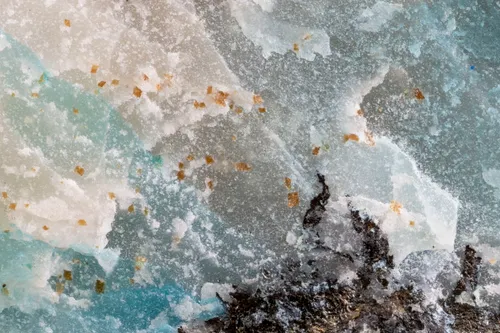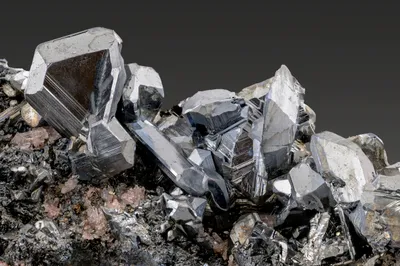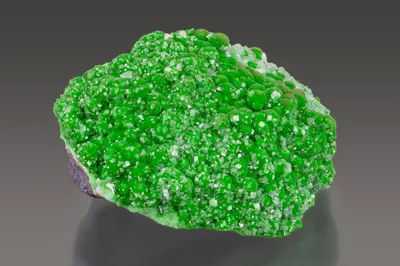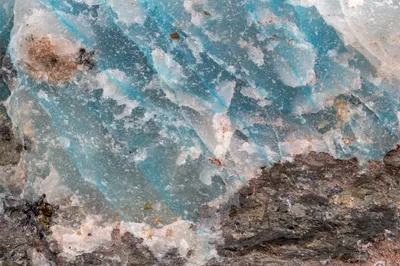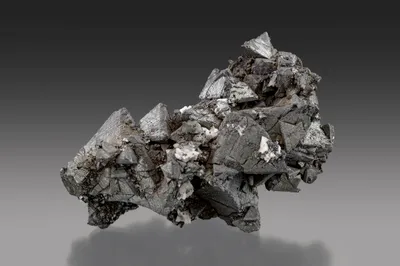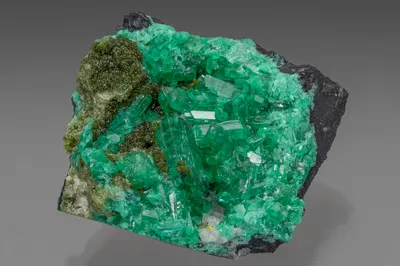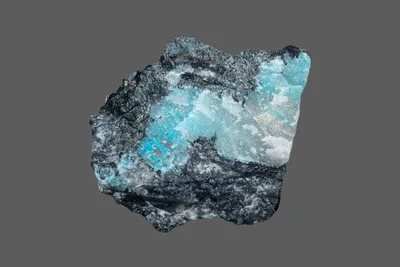
Image Credit: Malcolm Southwood.
Mineral Species
O'Danielite
Type Locality
Yes
Composition
Na☐ZnZn2(AsO4)[AsO3(OH)]2
Crystal System
Monoclinic
Status at Tsumeb
Confirmed (type locality)
Abundance
Extremely rare
Distribution
Second and third oxidation zones
Paragenesis
Supergene
Entry Number
Species; TSNB256
Type Mineralogy
The discovery of o’danielite is credited to Dr Bruno Geier who was chief mineralogist at Tsumeb between 1952 and 1972. Geier submitted an unidentified secondary mineral in cavities in corroded chalcocite-tennantite ore to Paul Keller for further study. O’danielite, IMA 1979-040, was described by Keller et al. (1981d) and named for Herbert O’Daniel (1903-1977), professor of mineralogy at the University of Munich. The original name, o’Danielite, was officially revised to o’danielite (Burke 2008). The crystal structure was revised by Keller and Hess (1988). Type material is conserved at the Institut für Mineralogie und Kristallchemie, Universität Stuttgart, Germany (catalogue number NM 09); in the Archiv der Universität Stuttgart, (Paul Keller Collection; catalogue number TM-79.40-8701.13) and at the Smithsonian Institution in Washington D.C. (catalogue number 145966).
General Notes
The type assemblage for o’danielite consists of "… a green cuprian adamite [= zincolivenite] as the older mineral. Younger than o’danielite are colourless prosperite … and a pale-rose manganous (sic.) koritnigite" (Keller et al. 1981d). The level from which the type specimen was recovered is not recorded, but it is almost certainly from the second oxidation zone and the paragenesis suggests the East 9 Pillar on 31 Level as a probable source.
O’danielite on the type specimen is transparent, pale violet in colour with a vitreous lustre. It occurs as anhedral grains up to 3 mm in size, sometimes with a tabular habit; euhedral crystals were not observed (Keller et al. 1981d).
Keller and Bartelke (1982) included o'danielite in an extended version of Keller’s (1977) paragenetic sequence II/4 as follows:
conichalcite >> cuprian adamite [=zinolivenite] >> o'danielite >> prosperite >> koritnigite.
A second paragenesis, believed to have been found on 46 Level in the third oxidation zone, comprises green o'danielite, with blue stranskiite, on quartz.
Associated Minerals
conichalcite; chalcocite; claudetite (?); gaitite; helmutwinklerite; hörnesite; johillerite; keyite; koritnigite; köttigite; ludlockite; prosperite; quartz; stranskiite; tennantite-(Zn); tsumcorite; zincolivenite
